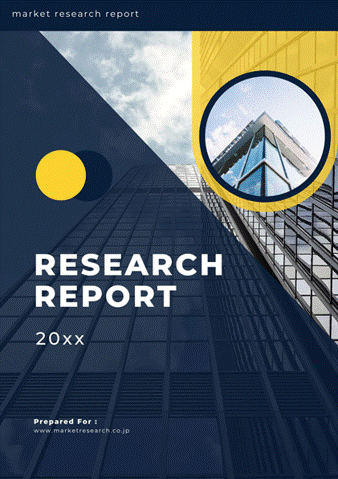 | • レポートコード:MRC2203A919 • 出版社/出版日:Mordor Intelligence / 2022年1月 • レポート形態:英文、PDF、55ページ • 納品方法:Eメール(受注後2-3営業日) • 産業分類:自動車 |
| Single User | ¥703,000 (USD4,750) | ▷ お問い合わせ |
| Site Licence | ¥962,000 (USD6,500) | ▷ お問い合わせ |
| Corporate License | ¥1,295,000 (USD8,750) | ▷ お問い合わせ |
• お支払方法:銀行振込(納品後、ご請求書送付)
レポート概要
| Mordor Intelligence社の本調査資料では、世界の自動車用ガラス繊維複合材料市場について調査・分析し、イントロダクション、調査手法、エグゼクティブサマリー、市場動向、中間体別別(短繊維熱可塑性プラスチック(SFT)、長繊維熱可塑性プラスチック(LFT)、連続繊維熱可塑性プラスチック(CFT)、その他)分析、用途別(内装、外装、構造アセンブリ、パワートレイン部品、その他)分析、地域別(北米、ヨーロッパ、アジア太平洋、南米、中東・アフリカ)分析、競争状況、市場機会・将来の傾向などの項目を掲載しています。 ・イントロダクション ・調査手法 ・エグゼクティブサマリー ・市場動向 ・世界の自動車用ガラス繊維複合材料市場規模:中間体別別(短繊維熱可塑性プラスチック(SFT)、長繊維熱可塑性プラスチック(LFT)、連続繊維熱可塑性プラスチック(CFT)、その他) ・世界の自動車用ガラス繊維複合材料市場規模:用途別(内装、外装、構造アセンブリ、パワートレイン部品、その他) ・世界の自動車用ガラス繊維複合材料市場規模:地域別(北米、ヨーロッパ、アジア太平洋、南米、中東・アフリカ) ・競争状況(Solvay Group、3B (Braj Binani Group)、Owens Corning、...) ・市場機会・将来の傾向 |
The automotive glass fiber composites market is expected to register a CAGR of over 5.5%, during the forecast period, 2020 – 2025.
Key Highlights
- The major growth drivers associated with this market are the rise in automotive production and the increasing demand for durable and lightweight materials because of stringent government regulations to reduce greenhouse gas emissions
- The future of the global automotive glass fiber composites market looks bright with opportunities in different automobile applications, such as interiors, exteriors, structural assembly, power-train and engine components, electrical and electronics, and others. The market for glass fiber composites in automobile structures is expected to be the fastest-growing segment, due to the wide variety of applications.
- Strategic alliances between car manufacturers, glass fiber and resin suppliers are the trends that have a direct impact on the dynamics of the automotive composites industry. Within the intermediates type, short fiber thermoplastic (SFT), long fiber thermoplastic (LFT), and continuous fiber thermoplastic (CFT) are the major ones that are used in automotive applications. SFT is expected to be the largest market by value, mainly driven by applications in power-train and engine components applications, which feature small complex-shaped components.
Key Market Trends
Increasing Adoption of Glass Fiber Composites in Automobiles
Although automobiles have been around for more than a century, the materials they are made of have mostly remained the same. Only since the past few decades that advanced materials, ranging from magnesium alloys to glass fiber composites, have made their way into new-generation cars. Advanced materials, such as glass fiber composites, are essential for boosting the fuel economy of modern cars, maintaining performance and safety. Since it takes lesser energy to accelerate a lighter object than a heavier one, lightweight materials offer great potential for increasing vehicle efficiency. A 10% reduction in the vehicle’s weight can transpire to a 6-8% increase in fuel economy.
Glass fiber composites are materials that have become popular in the past few years. One of the reasons for fiberglass composite’s relative success is that it has several advantages when compared to steel. It is corrosion-resistant, has significant chemical resistance, and is lightweight (three times less dense than steel). Fiberglass composite is mainly used in bumpers, hoods, and casings. Another area where this material is used is V-belts and timing belts, where glass strings are impregnated with rubber acting as reinforcement. Abrasion resistance is one other advantage of the fiberglass composite, which is why it is used for producing clutches and brake-pads. Clutch disks are reinforced with woven fiberglass composites to maintain their integrity.
Europe Anticipated to be the Largest and Fastest Growing Market
Europe is touted to be the fastest growing market due to the presence of many car manufacturers, such as BMW, Volkswagen, Groupe PSA, etc., who are adopting glass fiber composites in their cars. Government regulations, such as the greenhouse gas emission target in the European countries are also paving way for OEMs to incorporate light-weight materials to decrease the overall vehicle weight.
Germany is one of the leading automobile manufacturing countries, globally. The country has recovered to a reasonable extent from the economic recession that affected the economic condition of the country adversely. Germany is home to some of the leading global automobile manufacturers, like Volkswagen AG, Daimler AG, BMW, Ford GmbH, and Opel. More than 5.1 million automobiles are annually manufactured in Germany. With an increase in the production of passenger vehicles and SUVs, the demand for fiberglass in the reinforcements of automotive components is expected to significantly increase during the forecast period.
Competitive Landscape
The automotive glass fiber composites market is mildly consolidated. Some of the major companies in the glass fiber composites market include Solvay Group, 3B (Braj Binani Group), Owens Corning, Veplas Group, and SAERTEX GmbH & Co.KG. The market is also characterized by the presence of much smaller players especially in the Asia-Pacific, region who deal with aftermarket products.
Additional Benefits:
- The market estimate (ME) sheet in Excel format
- 3 months of analyst support
1 INTRODUCTION
1.1 Study Assumptions
1.2 Scope of the Study
2 RESEARCH METHODOLOGY
3 EXECUTIVE SUMMARY
4 MARKET DYNAMICS
4.1 Market Drivers
4.2 Market Restraints
4.3 Industry Attractiveness – Porter’s Five Forces Analysis
4.3.1 Threat of New Entrants
4.3.2 Bargaining Power of Buyers/Consumers
4.3.3 Bargaining Power of Suppliers
4.3.4 Threat of Substitute Products
4.3.5 Intensity of Competitive Rivalry
5 MARKET SEGMENTATION
5.1 Intermediate Type
5.1.1 Short Fiber Thermoplastic (SFT)
5.1.2 Long Fiber Thermoplastic (LFT)
5.1.3 Continuous Fiber Thermoplastic (CFT)
5.1.4 Other Intermediate Types
5.2 Application Type
5.2.1 Interiors
5.2.2 Exteriors
5.2.3 Structural Assembly
5.2.4 Power-train Components
5.2.5 Other Application Types
5.3 Geography
5.3.1 North America
5.3.1.1 United States
5.3.1.2 Canada
5.3.1.3 Rest of North America
5.3.2 Europe
5.3.2.1 Germany
5.3.2.2 United Kingdom
5.3.2.3 France
5.3.2.4 Rest of Europe
5.3.3 Asia-Pacific
5.3.3.1 China
5.3.3.2 Japan
5.3.3.3 India
5.3.3.4 Rest of Asia-Pacific
5.3.4 South America
5.3.4.1 Brazil
5.3.4.2 Rest of South America
5.3.5 Middle-East and Africa
5.3.5.1 United Arab Emirates
5.3.5.2 South Africa
5.3.5.3 Rest of Middle-East and Africa
6 COMPETITIVE LANDSCAPE
6.1 Vendor Market Share
6.2 Company Profiles
6.2.1 Solvay Group
6.2.2 3B (Braj Binani Group)
6.2.3 Owens Corning
6.2.4 Jiangsu Changhai Composite Materials
6.2.5 Veplas Group
6.2.6 SAERTEX GmbH & Co.KG
6.2.7 ASAHI FIBER GLASS Co., Ltd.
6.2.8 Nippon Sheet Glass Company, Limited
7 MARKET OPPORTUNITIES AND FUTURE TRENDS